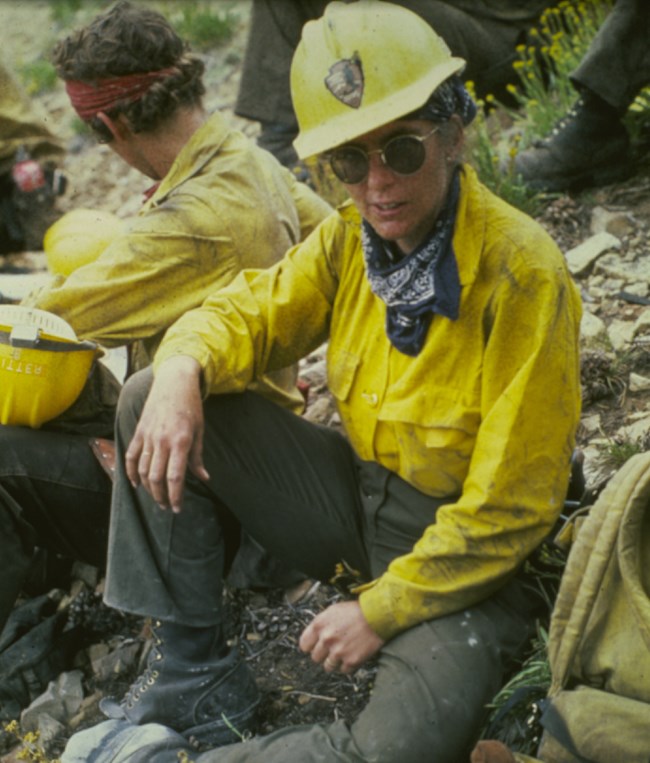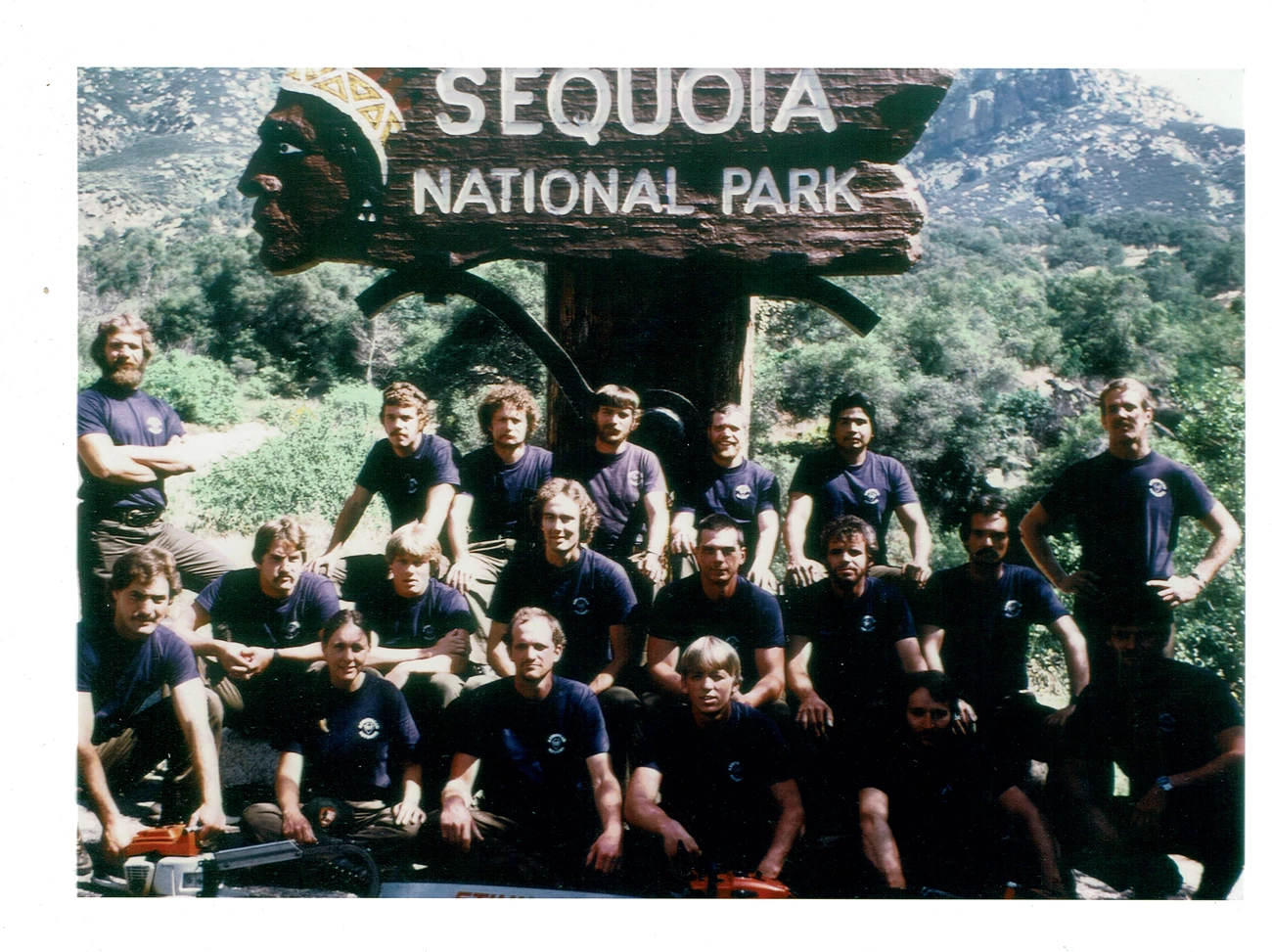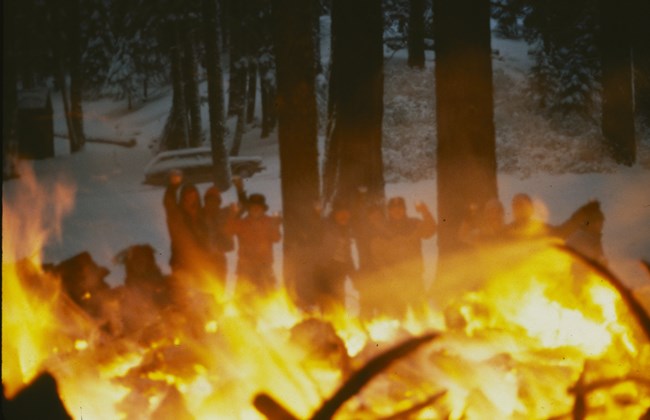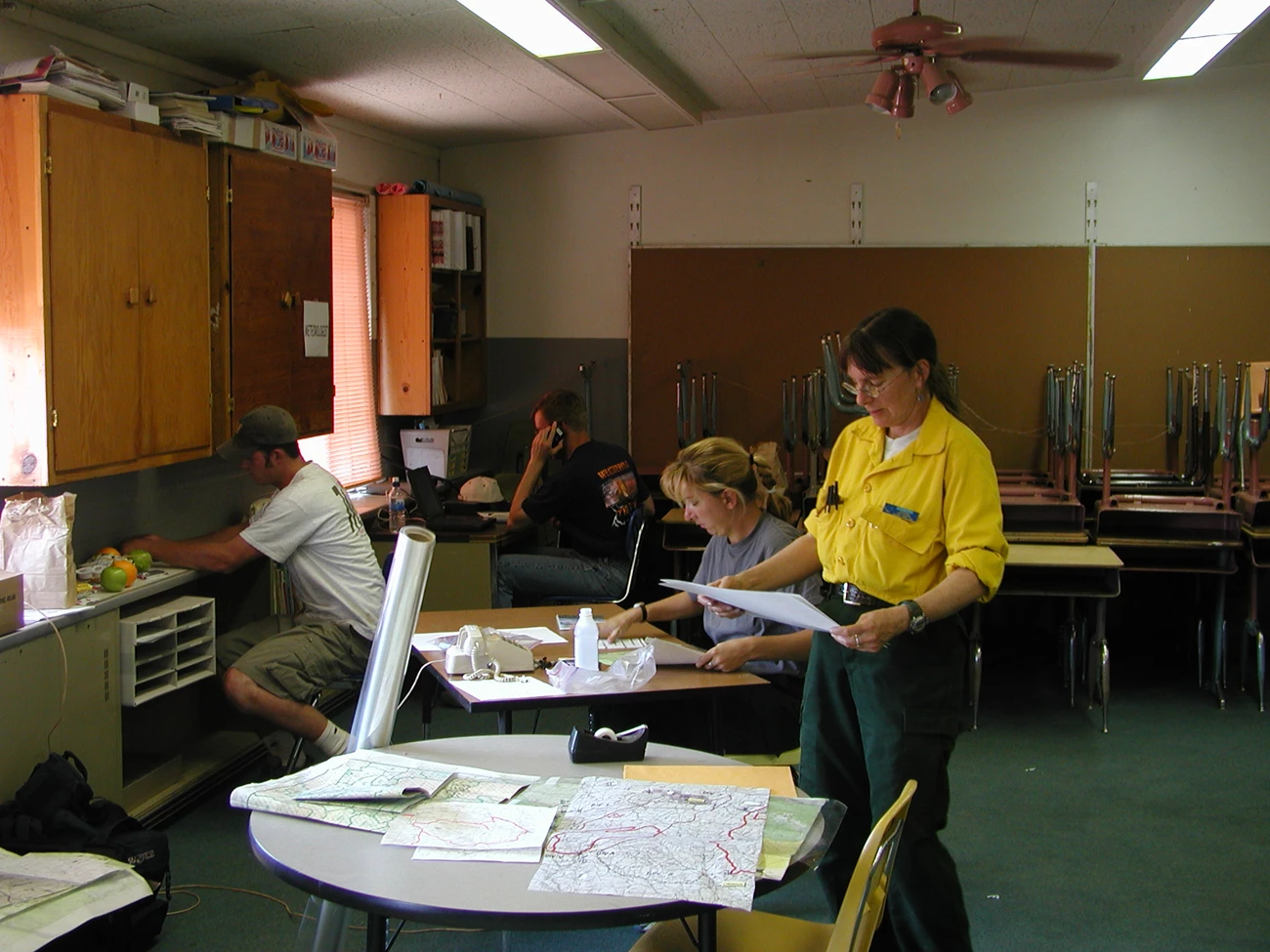Last updated: May 18, 2022
Article
Mary Kwart: Wildland Fire Pioneer

Image courtesy of Mary Kwart
Mary Kwart came of age during the 1960s and 1970s, when feminist ideas inspired some young women to seek radically new career possibilities. Kwart was among them. She combined a spiritual connection with nature and a respect for and fascination with fire to become a wildland firefighter. In the early 1980s she was among the first women to join the Arrowhead Interagency Hotshots, an elite National Park Service crew, stationed at Sequoia & Kings Canyon National Parks in California. Throughout her life, Kwart defied gender stereotypes to create new spaces for herself and for future generations of women in land management agencies.
Early Years
Kwart was born and raised in California. Her appreciation of nature stemmed from annual family camping trips to Yosemite National Park. During one hiking trip at Yosemite at about the age of 10, Kwart spotted a solo female hiker and knew right then she wanted to be like her. Kwart’s initial interest in forest fires emerged while she was attending a summer camp in southern California. A fire forced the campers to evacuate. While the fire scared and alarmed her fellow campers, it intrigued Kwart. In 1971 she ventured out on her first solo backpacking trip from Berkeley to Yosemite with a pound of sunflower seeds and a pound of raisins stuffed inside a $5 Boy Scout pack to keep her fed and a cotton sleeping bag to keep her warm. About this time Kwart committed herself to the burgeoning feminist movement and to spirituality.
-
Mary Kwart: Spiritual Growth
In an oral history interview, Mary Kwart describes her experience in nature.
- Credit / Author:
- NPS Park History Program
- Date created:
- 05/10/2021
-
Mary Kwart: "Committed to a feminist vision of my life"
In an oral history interview, Mary Kwart remarks on her commitment to a feminist vision of her live that took shape in the 1970s, even before her position with the Arrowhead Interagency Hotshots.
- Credit / Author:
- NPS Park History Program
- Date created:
- 05/10/2021

Image courtesy of Mary Kwart
Culture of the NPS Arrowhead Interagency Hotshot Crew
Candidates for the elite hotshot crew had to pass a series of physical fitness tests. The test standards reflected male models of fitness by focusing on upper body strength. All crew members had to complete seven pull-ups. Kwart initially struggled to reach this standard, and she spent most of the off-season training to increase her pull-up count. Passing what was known as a step test was another requirement.
-
Mary Kwart: Hotshot Strength and Endurance
In an oral history interview, Mary Kwart describes the fitness requirements when she was on the hotshot crew and the differences between strength and endurance in firefighting.
- Credit / Author:
- NPS Park History Program
- Date created:
- 05/10/2021
As one of the first women to venture into the firefighting profession in the National Park Service, Kwart knew she was setting an important precedent. If she failed, she might set back opportunities for other women. She had to prove that women could do dangerous and challenging jobs. There was little room for error.
-
Mary Kwart: "I can't fail because I'm representing all women"
In an oral history interview, Mary Kwart voices the burden of being the only women in her position.
- Credit / Author:
- NPS Park History Program
- Date created:
- 05/10/2021

Image courtesy of Mary Kwart
Kwart enjoyed the camaraderie of the hotshots. Considered “the marines of firefighting,” hotshots had to be disciplined, prepared to respond at a moment’s notice, able to withstand smoke, grime, and fatigue without complaint. Bonds of respect grew from the dangers they faced together and their vow to take care of each other. A macho culture rooted in bravado permeated the crew. Crew members sang ribald songs to pass the time, and profanity laced virtually every sentence. The F-word was a favorite. Kwart adapted to the climate by joining in, telling colorful jokes, and peppering her language with curse words along with the best of them.
KWART: I used the F-word as much as anybody. I enjoyed using it. Although we were discouraged from using it when we were working around the public it slipped out. We were doing project work at the base of the Sequoia Grove near Swale Campground in Sequoia National Park where we were stationed. I slipped up and called out, “Hand me that F—ing shovel." Some older women were passing by and I heard them say, “What a nice looking girl, but such a terrible mouth.”

Image courtesy of Mary Kwart
Spiritual Connection to Fire
In addition to furthering the cause of gender equality in non-traditional careers, firefighting and being outdoors served as an extension of Kwart’s spiritual practice. Raised a Catholic, Kwart became a Zen Buddhist after an extensive period of reading and reflecting about its values. She took her need for spiritual practice seriously. Oddly enough, the act of firefighting—specifically, the unwavering attention and all-consuming focus that it required—allowed Kwart to enter into a state of mindfulness. Through this relationship with fire, she came to view herself like a “firefighting monk.”-
Mary Kwart: Finding Mindfulness and Right Livelihood in a Fire Career
In an oral history interview, Mary Kwart describes the relationship between foundations of Buddhist practice and her firefighting career.
- Credit / Author:
- NPS Park History Program
- Date created:
- 05/10/2021

Image courtesy of Mary Kwart
Conclusion
Kwart went on to build a 30-year career in fire management and fire science with several federal agencies before retiring in 2007. The hotshot years were a defining moment. She proved that women could succeed in a career that demanded strength, stamina, and smarts—when they were given a fair chance.
A Story Map
Mary Kwart: Wildland Fire PioneerUSFS. Fire Terminology.
Hale, Philip E. and A. Sydney Johnson. “The Historical Foundations of Prescribed Burning for Wildlife: A Southeastern Perspective.”
USFS. The National Interangency Hotshot Crew Steering Committee. “Hotshot Crew History in America.”
NPS. Sequoia and Kings Canyon National Parks: Arrowhead Interagency Hotshots Celebrate 30 Years of Service.
NPS. Wildland Fire Fact Sheet.The Women Before Me: The Pioneering Women of the Zigzag Hotshots.
